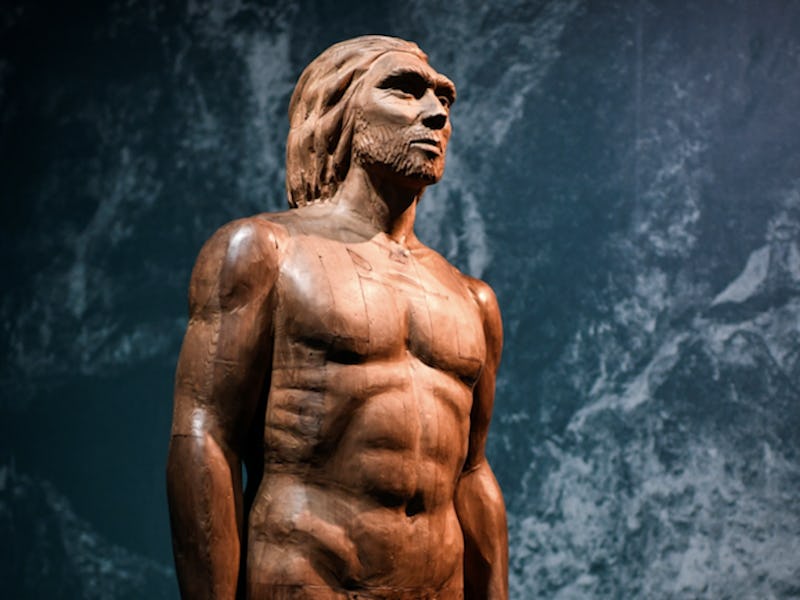Inverse Daily: Neanderthal grub
New evidence suggests Neanderthals were not inferior to anatomically modern humans as long believed.

To kick off the week, I thought I’d compile some of the creative responses to how you have all been socializing while cooped up. A lot of people are relying on virtual technology to shrink the feeling of distance, including “virtual breakfast” over Zoom, backgammon over FaceTime, Yahtzee in Google Hangout, virtual guitar lessons, and “keep in touch gin n’ tonics.”
One reader brought up the point that some of her loved ones don’t have access to computers, so she joined a postcard exchange program (!!!) to stay in touch with her offline friends. Many mentioned sending letters. Never before has sending a letter seemed as brilliant as it does when every other phrase in the working world is “Zoom call.”
Here’s a really lovely evening routine that was shared with us: “My mother-in-law drops by our back porch each night. A glass of wine is waiting by her chair, placed there by a person who has first carefully washed their hands. My wife and I sit on the other side of the patio and talk to her with our own glasses. When all the glasses are empty, we adjourn until the next night.”
This is an adapted version of the Inverse Daily newsletter for March 30, 2020. Subscribe for free and earn rewards for reading every day in your inbox.
We’ve got a new query for you: Are you watching or rewatching any TV series, movie, YouTube channel, or something else while you practice some good old social distancing? Let us know here and we'll share some of the best responses in a future newsletter.
P.S. It’s nearly the end of the month! We’ll be announcing this month’s award winners soon. Stay tuned.
Coronavirus resources from Inverse staffers
At-home coronavirus tests aren’t a saving grace. They’re snake oil. (Mel)
Is my chest tightness anxiety or coronavirus (The Cut)
Your neighbors are not the disease (The Outline)
Helen, help me: Advice on quarantine cooking and other quandaries (The New Yorker)
Neanderthals ate nutrients crucial to human intelligence
The omega-3 fatty acids EPA and DHA, found in seafood, are known to be an important part of a healthy diet. Today, it would be wise to add seafood to your diet as a way of protecting your heart. However, long ago, it’s theorized that omega-3s majorly affect another part of the body: the brain.
It’s theorized that what gave our Homo sapien ancestors a crucial cognitive boost was eating seafood. Now, an excavation of a sea cave in Portugal has led paleoanthropologists to hypothesize that eating seafood also gave Neanderthals the same cognitive advantage.
This study adds to the growing pile of evidence that suggests Neanderthals were not inferior to anatomically modern humans as long believed, and were, in many ways, a very similar sort of human.
Here’s the story on a distant sort of human.
In other neanderthal news:
Drones could be the next emergency medical workers
It's a bird, it's a plane -- it's a drone delivering much-needed medical supplies. No longer sequestered to the back of enthusiasts' closets, a study published Monday has demonstrated how drones can be used during disasters to deliver important medical supplies. In this study, the drone successfully delivered insulin across 12 miles of ocean off the coast of Ireland. The study's authors tell *Inverse* that the success of this model shows how drone deliveries could also be used during medical disruptions like Covid-19 to deliver supplies and medicine to those in quarantine.
Here’s the story of how drones can go the distance.
Read up on drone delivery below:
Voyager witnessed something on Uranus 33 years ago
On January 24, 1986, the Voyager 2 spacecraft did a close flyby of Uranus. Today, scientists took a new look at the data gathered from that fateful encounter and found that Voyager had actually flown right through a plasmoid above the planet's cloud tops. The discovery marks the first time that plasmoids were discovered at Uranus. It lasted for only 60 seconds of Voyager’s 45-hour-long flyby and therefore appeared as a tiny blip in the data.
Here’s a closer look at the plasmoids discovered at Uranus.
More news on space explorations:
This is an adapted version of the Inverse Daily newsletter for March 30, 2020. Subscribe for free and earn rewards for reading every day in your inbox.